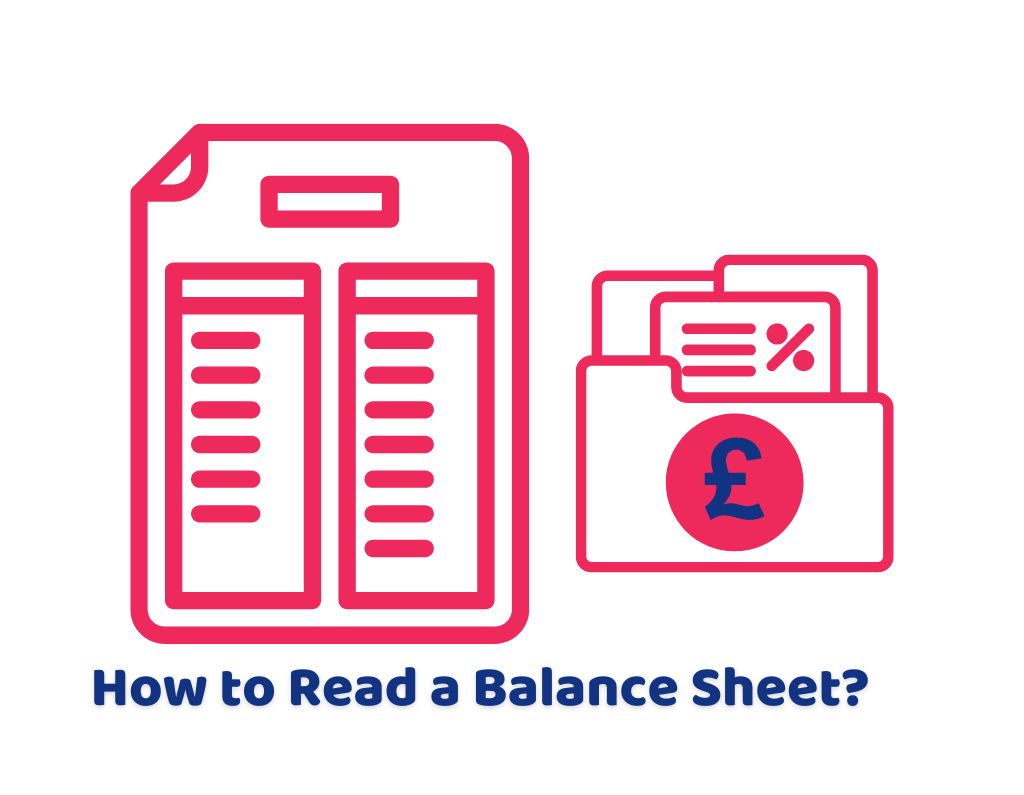Thinking about how to read a balance sheet? A balance sheet is a financial record that provides a comprehensive picture of a company’s financial health at a point in time. Also, the balance sheet includes a separation between assets and liabilities. Which should balance out to zero.
It also includes equity, which represents a company’s ownership structure and its value. When properly kept, assets will always equal liabilities plus equity, which is a balancing equation that allows for a comprehensive understanding of the financial position of a company.
Get in touch with our young, clever, and tech-driven professionals if you want to choose the solution to tax burden or accounting problems in the UK for your income. We will ensure to offer the best services.
How the Balance Sheet Works?
A balance sheet is a financial account that records the different transactions between an individual, company, or entity over a while. The balance sheet should always equal zero, which means that assets minus liabilities equate to the equity in the company.
A statement of financial position records the assets and liabilities at the end of the accounting period. It includes fixed assets such as land and buildings, current assets like cash and trade receivables, and liabilities like loans and trade payables.
What is the Balance Sheet Equation?
The equation of the balance sheet is a fundamental accounting concept that states that all assets must balance with all liabilities and equity. In brief, the balancing of the equation of the balance sheet means that assets must equal liabilities plus equity. In a formula, the equation of the balance sheet can be represented as:
Assets = Liabilities + Equity
In this formula, the assets represent the total of all current and non-current assets held by the business. The liabilities represent the total of all current and non-current liabilities owed by the business. The equity represents any ownership interests or contributions of the business owners.
How to Read a Balance Sheet?
Here’s how to read a balance sheet:
1. Look at the Assets section to understand the company’s current and fixed assets.
2. Review the Liabilities section to see the company’s current and long-term debt.
3. Examine the Equity section to understand who is invested in the company and how they’re divided between shareholders, owners, and partners.
4. Compare the balance sheet to last year’s figure for a more comprehensive understanding of the company’s financial situation.
5. Finally, look at the Notes section for any additional information or explanations regarding specific assets or liabilities.
This information can be extremely helpful and important for investors and shareholders, especially if you’re considering investing in or buying the company.
Main Sections on a Balance Sheet
Here are the main sections you’ll find on a balance sheet:
1. Assets: The asset section reflects the assets owned by the company, including cash, fixed assets such as buildings and land, trade receivables, investment properties, and other liquid assets such as inventory.
2. Liabilities: The liability section reflects the debts owed by the company, including current debts such as short-term loans and long-term debts such as mortgages. It also includes liabilities from leases and other contractual obligations.
3. Equity: The equity section reflects the ownership interests of the company, including share capital and reserves.
4. Financial liabilities: The balance sheet shows how much money is owed to creditors and investors. A healthy balance sheet has a manageable amount of debt and a sustainable ratio of debt to equity.
5. Financial reserves: The balance sheet shows how much cash and liquid assets a company has available. Strong balance sheets indicate that the company has the means to cover operational costs, make investments, and weather unexpected events.
6. Notes: The notes section in a balance sheet contains any additional information or explanations regarding specific assets or liabilities, as well as any other financial statements that provide a deeper understanding of the company’s financial situation. This section can be extremely helpful and important for investors and shareholders, especially if they’re considering investing in or buying the company.
Does a Balance Sheet Always Balance?
In general, a balance sheet is designed to balance. As the name suggests, the balance sheet should always equal zero. It shows the relationship between assets and liabilities which should balance out perfectly. This means that all assets and liabilities should be carefully accounted for to ensure that they match. When the balance sheet is correctly kept, the balance will always end up exactly equal to zero.
The Bottom Line
To conclude the discussion on how to read a balance sheet, we can say that reading a balance sheet can provide valuable information. This is about the financial health and stability of a company. Assets show the value of a company’s current and fixed assets, both liquid and illiquid. Liabilities show the amount of debt owed by the company to creditors and investors.
Equity shows the ownership structure of the company, including share capital and reserves. Financial reserves and debt ratios give a comprehensive assessment of a company’s financial health. When interpreted together, a balance sheet paints a clear picture of a company’s financial capabilities.
Reach out to one of our professionals to get to know about how to read a balance sheet in the UK. Get in touch with us and you will be provided instant professional help!
Disclaimer: The information provided on AccountingFirms.co.uk is for informational purposes only and should not be considered as financial advice. Always consult with a professional accountant to ensure compliance with UK laws and regulations.

